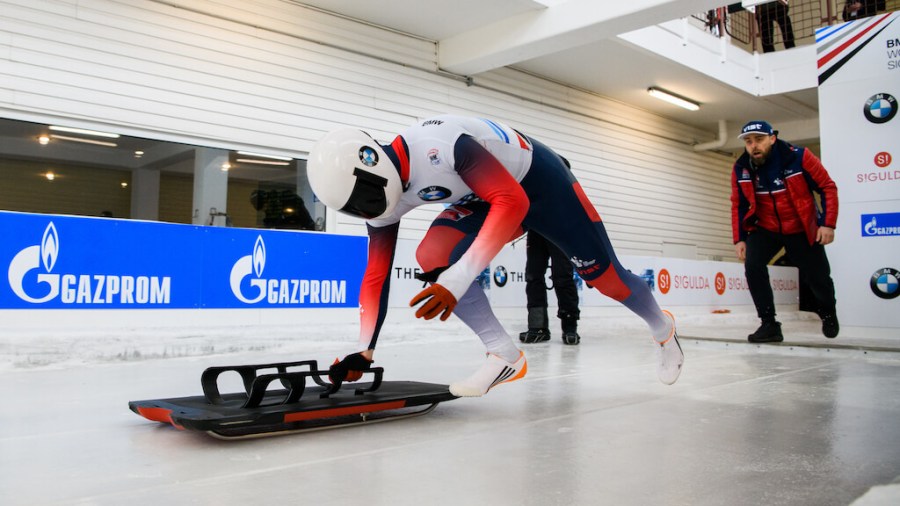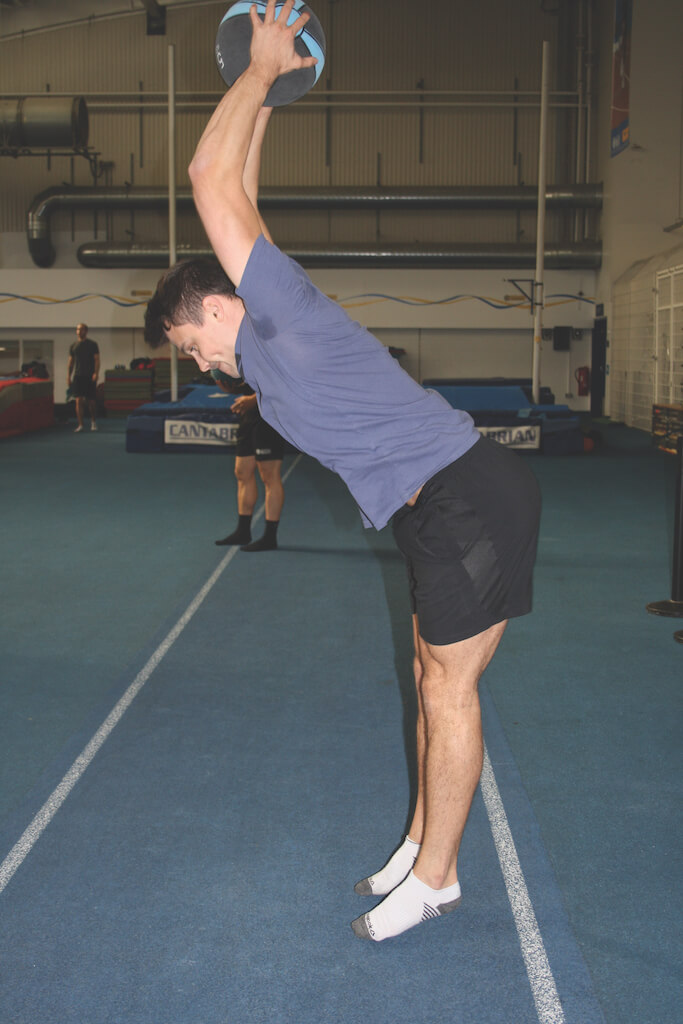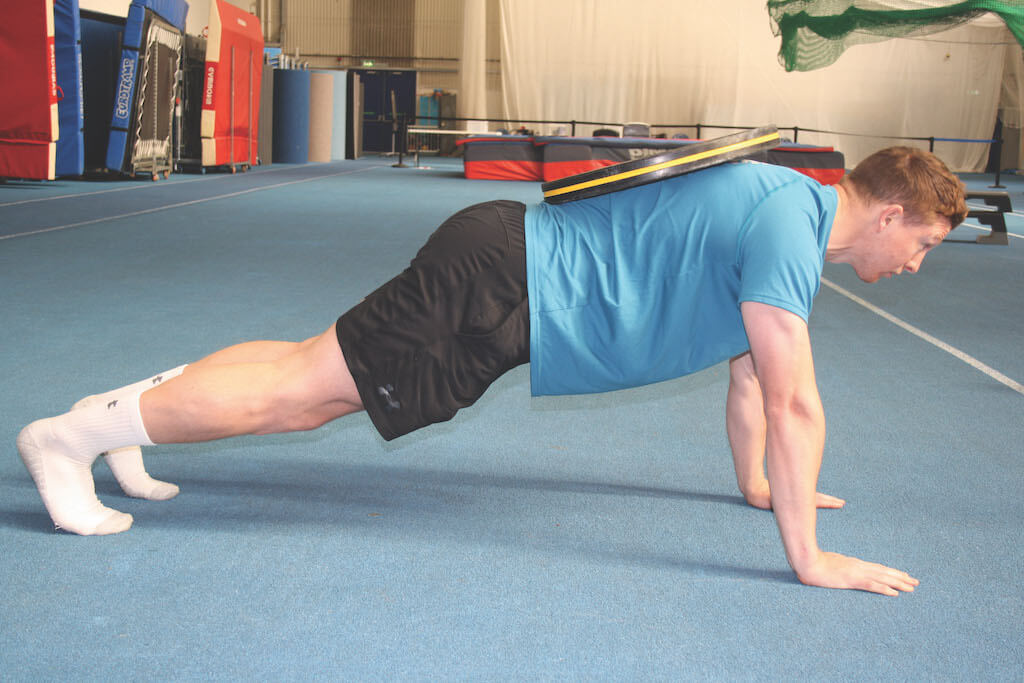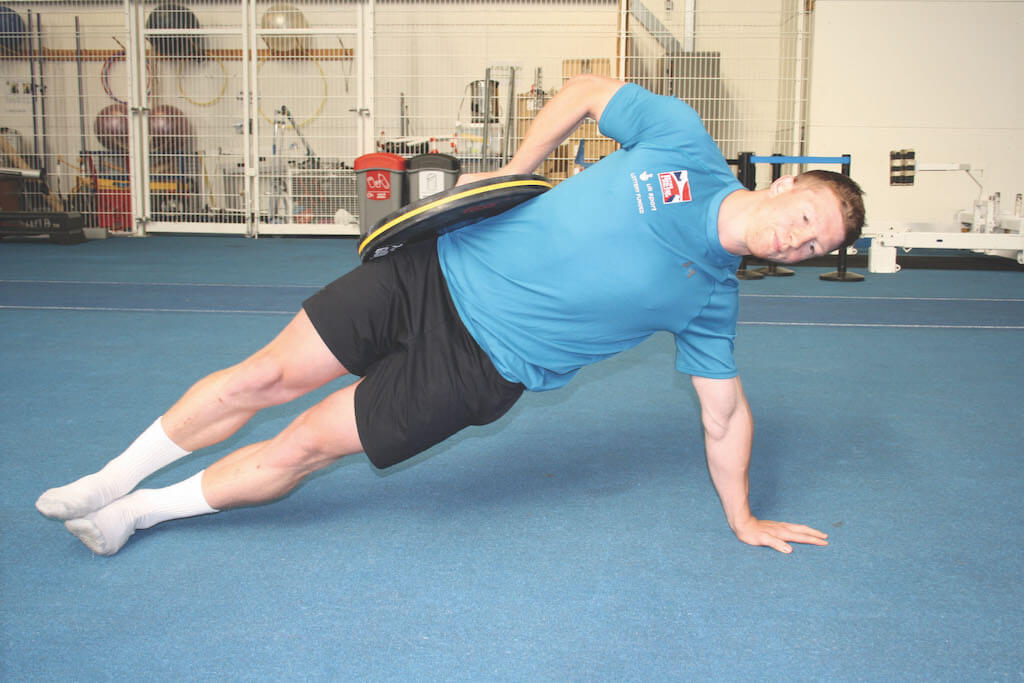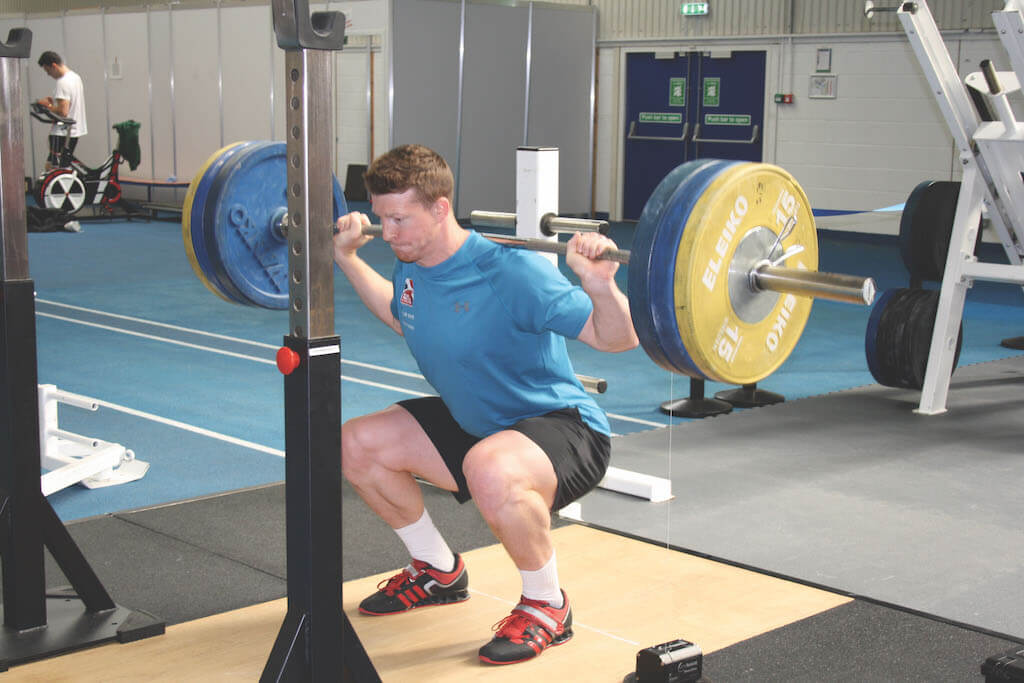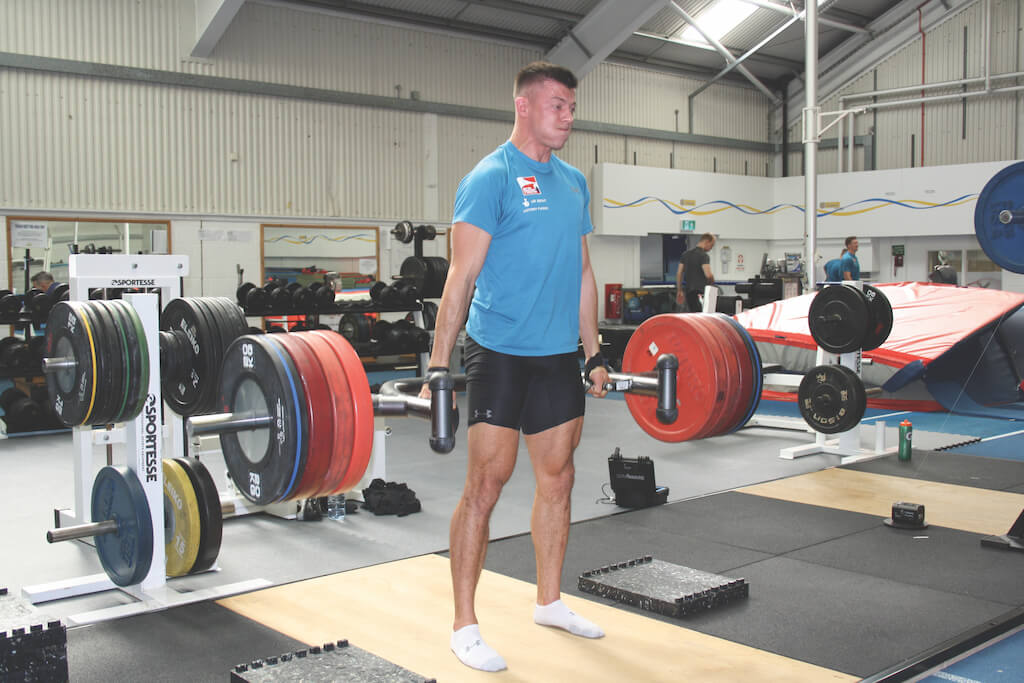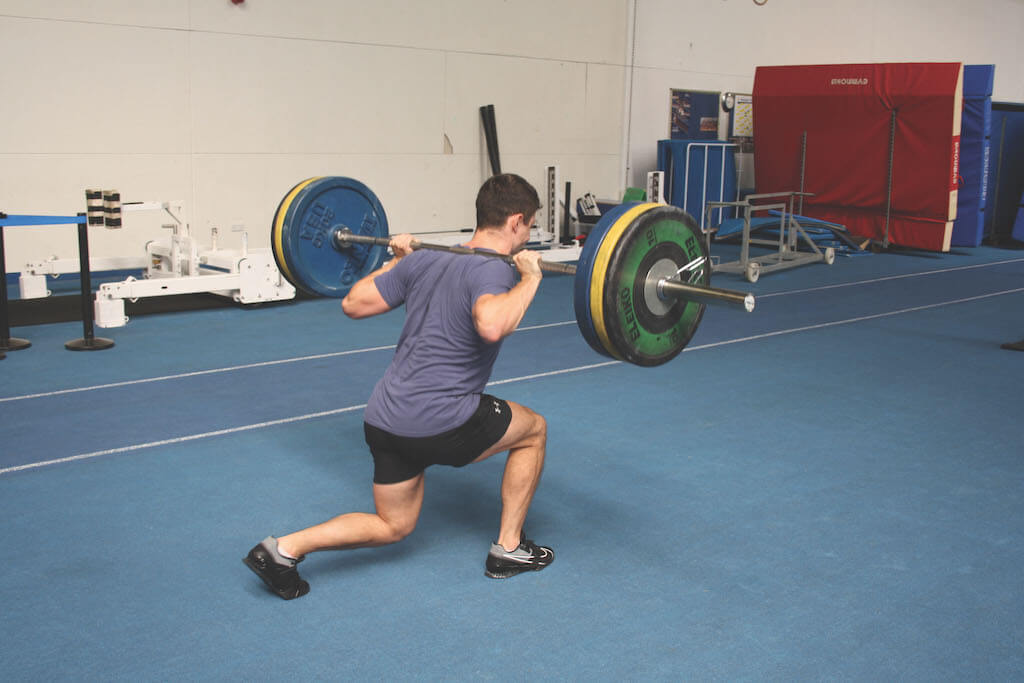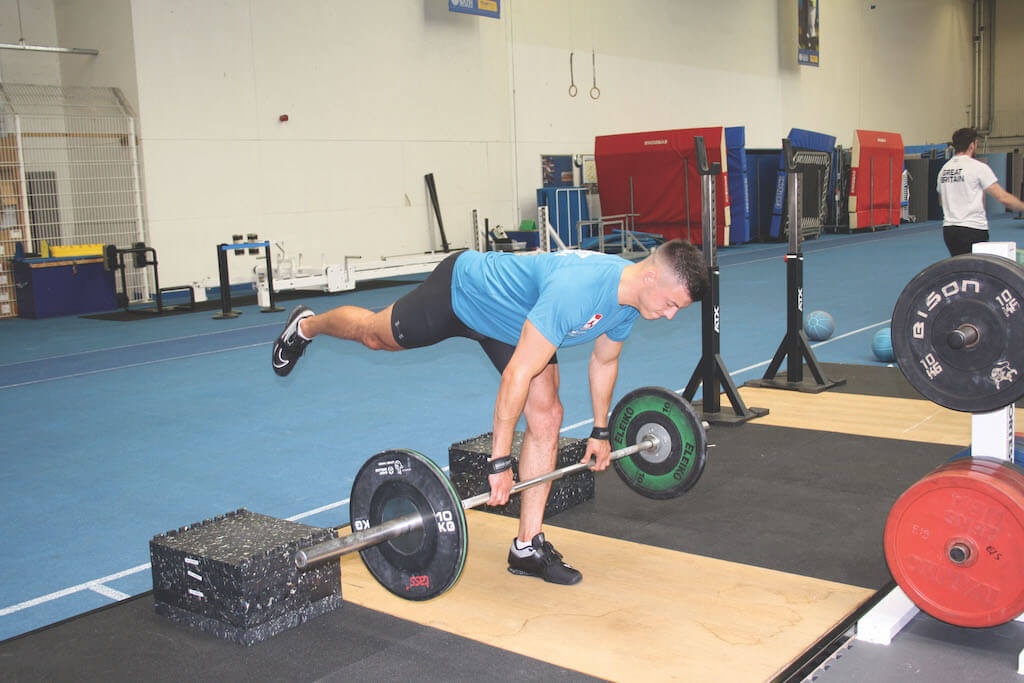Build leg strength and explosive power with this workout from Team GB’s world-beating Skeleton stars.
Careering downhill at 90mph, on a metal tray, your chin centimetres from ice, might sound like a snow day gone wrong, but British Bobsleigh and Skeleton (BBSA) have found a way to become the most unlikely of world beaters.
Ranging from European Taekwondo champions to a former American football wide receiver, the athletes – based in the heart of Bath – encapsulate the underdog mentality.
A diverse group seeking Olympic glory. Its humble set-up, which boasts nothing more than a push track – the only one in Britain – sees them attempt to compete on the world stage against nations who are far better equipped for the winter sport.
Despite these limitations, the British team has found enormous success since its reintroduction to the Winter Olympics in 2002: capturing seven medals, including three golds in the five Games this century – more than any other nation and exactly half of GB’s medal tally.
The team is based at the University of Bath, training day-in, day-out surrounded by fellow Olympians at the elite-level £35 million sports campus.
To contend on the world stage is an enormous challenge in any discipline, but to transfer to a new sport as an adult, like almost all the team has, is not for the faint-hearted – especially when you get a sense of the hard graft they put in.
Training legs is an almost everyday occurrence, but it’s the team’s heaviest session of the week that’s the most gruelling – incorporating double-leg, single-leg and hamstring-focused exercises to build force and, crucially, force at speed.
“It’s how we move the weight, not how much we lift,” says Matt Weston, a former Saracens Rugby Academy starlet who was discovered by UK Sport through its Discover Your Gold scheme. “We could lift heavier if we wanted to, but we’re not after that.”
“We really put them through their paces,” says Mitch Smith, one of the team’s strength and conditioning coaches. “Each day they come in and lift hundreds of kilos, but it’s all about power and explosiveness, not hypertrophy.”
And it’s the opening few seconds on the track where the hours in the gym come into play. Combining velocity and brute power, the athletes undertake an exercise programme unlike any other sport.
Men’s Fitness visited the team’s training centre in Bath to find out what leg day looks like when power and speed are all that c0unts…
WARM-UP
1a. Medicine Ball Throws
Reps: 8-10 of each
- Throw straight down
- Jump and throw
1b. Planks
Reps: 60 secs of each
- Weighted front plank
- Weighted side plank
Coach’s Comment:
“The planks are to get the core section ready to take load and transmit force,” says Ed McDermott, the team’s other S&C coach, “and the med ball work is there as a central nervous system/ neuromuscular primer to get the nervous system ready for output.”
MAIN SESSION
2. Barbell Back Squat (drop set)
Reps: 2 + 2 + 2
Rest: 30 secs intra set / 2 mins between sets
Sets: 4
The daddy of all leg exercises, the squat predominately trains the quads and glutes, providing the strong base essential for skeleton.
- Stand a little wider than shoulder-width apart (or where is biomechanically comfortable) with feet pointing outwards.
- Keep chest high and look straight ahead.
- Lower down to a 90° angle (use a box if necessary).
- Keep the weight on the heels and balls of your feet.
- Drive up through your heels.
Coach’s Comment:
“We incorporate a drop set, with two reps at RPE of 90 per cent, then 70 per cent, then 50 per cent,” says McDermott. “This triggers the nervous system and helps build dynamic athleticism.”
3. Hex Bar Deadlift
Reps: 2 + 2 + 2
Rest: 30 secs intra set / 2 mins between sets
Sets: 4
The position of the bar is closer to the centre of gravity, which allows for a greater activation of the quads compared with the traditional deadlift.
- Stand with your feet hip-width apart.
- Reach down and grasp the handles of the bar, then sit your hips back, lift your chest and shoulders, and raise your gaze.
- Keeping your back flat, stand up by straightening your hips and knees to lift the bar to around mid-thigh height.
- Squeeze your glutes at the top, then lower with control.
4. Walking Lunge
Reps: 5
Rest: 90 secs
Sets: 3
Unilateral exercises like the walking lunge are not only great for strengthening your legs, but also your hip flexors. These muscles are vital for explosiveness and injury prevention.
- Keep your chest high and look straight ahead.
- Stride forward with your lead leg and bend both knees at the same time.
- Let the back knee touch the floor before striding forward with the opposite leg.
- That is 1 rep.
Coach’s Comment:
“We mix between barbell and dumbbell lunges, and different techniques: staying low or finishing high,” says McDermott. “This challenges the athletes’ single-leg control, stability and strength, to help set a foundation for specific transfer work.”
5a. Barbell Romanian Deadlift
Reps: 15
Rest: Straight into 5B
Building explosive strength in the hamstrings is vital for the dynamism skeleton athletes must possess.
- Stand with feet a little wider than shoulder-width apart.
- Point toes outwards at an acute angle.
- Grip the bar on the outside of your shins.
- Bend your knees slightly.
- Slowly descend the bar towards the floor as you bend your hips.
- Keep your chest high and look straight.
- When a stretch is felt, begin to extend your hips.
5b. Hip Thrust
Reps: 15
Rest: 90 secs
Sets: 2
- Lie with your upper back supported on a bench, holding a barbell or dumbbell across your thighs.
- Thrust your hips up, squeeze and hold your glutes at the top, then lower back to the start.
Coach’s Comment:
“While we do include various exercises to engage the hamstrings, like curls and extension, on a heavy leg day a compound movement is the most effective,” says McDermott.
6. Single-Leg Romanian Deadlift
Reps: 12
Rest: 90 secs
Sets: 12
While the RDL mainly focuses on the hamstrings and glutes, the single-leg deadlift incorporates more mobility, core and balance. It also helps to address any potential muscle imbalances.
- Stand with feet close together.
- Plant your right foot down while slightly bending the knee.
- While keeping it straight, drive the left leg backwards until it’s parallel with the floor as you hinge at the hips.
- Return your left leg to the starting position and repeat with the right leg.
Coach’s Comment:
“We put a lot of emphasis on our posterior chain to help prevent high-speed hamstring injuries,” explains McDermott, “particularly as the pushing position places the hamstrings in an unnatural position.”
Words and photography: Jacob Newbury

